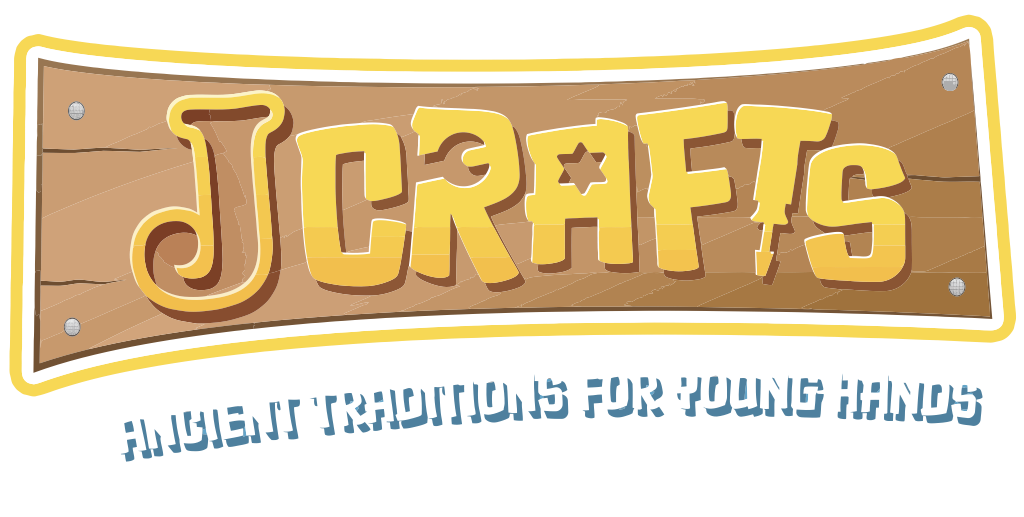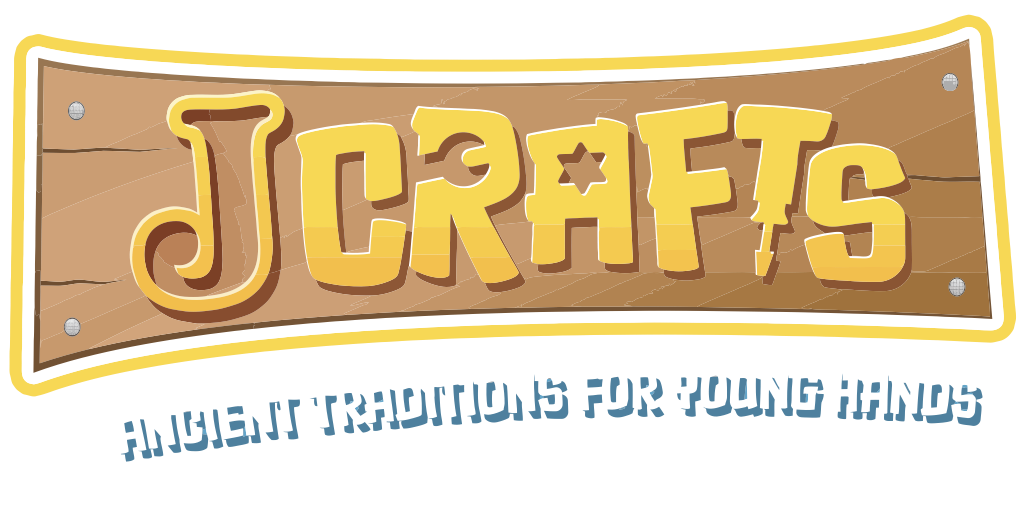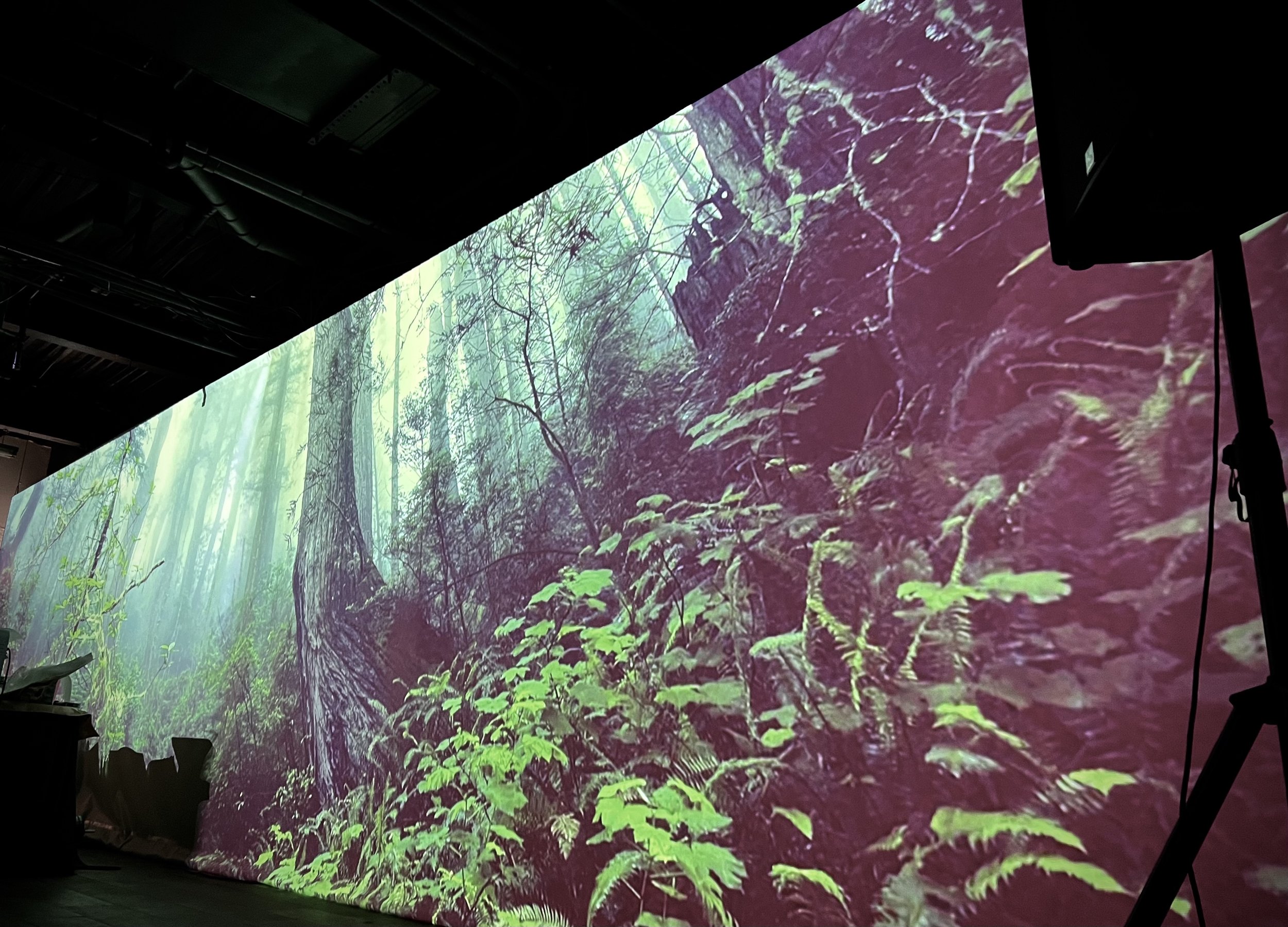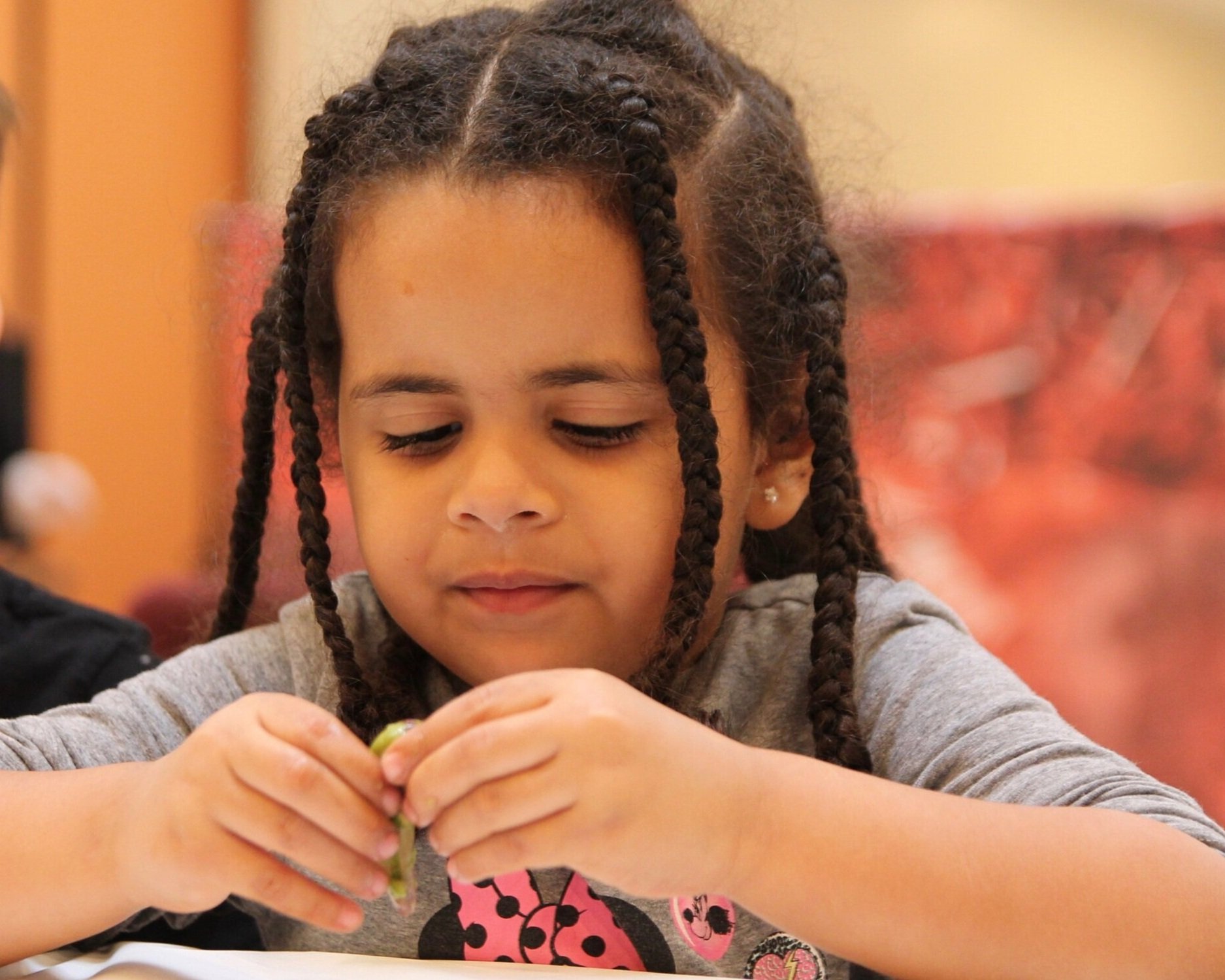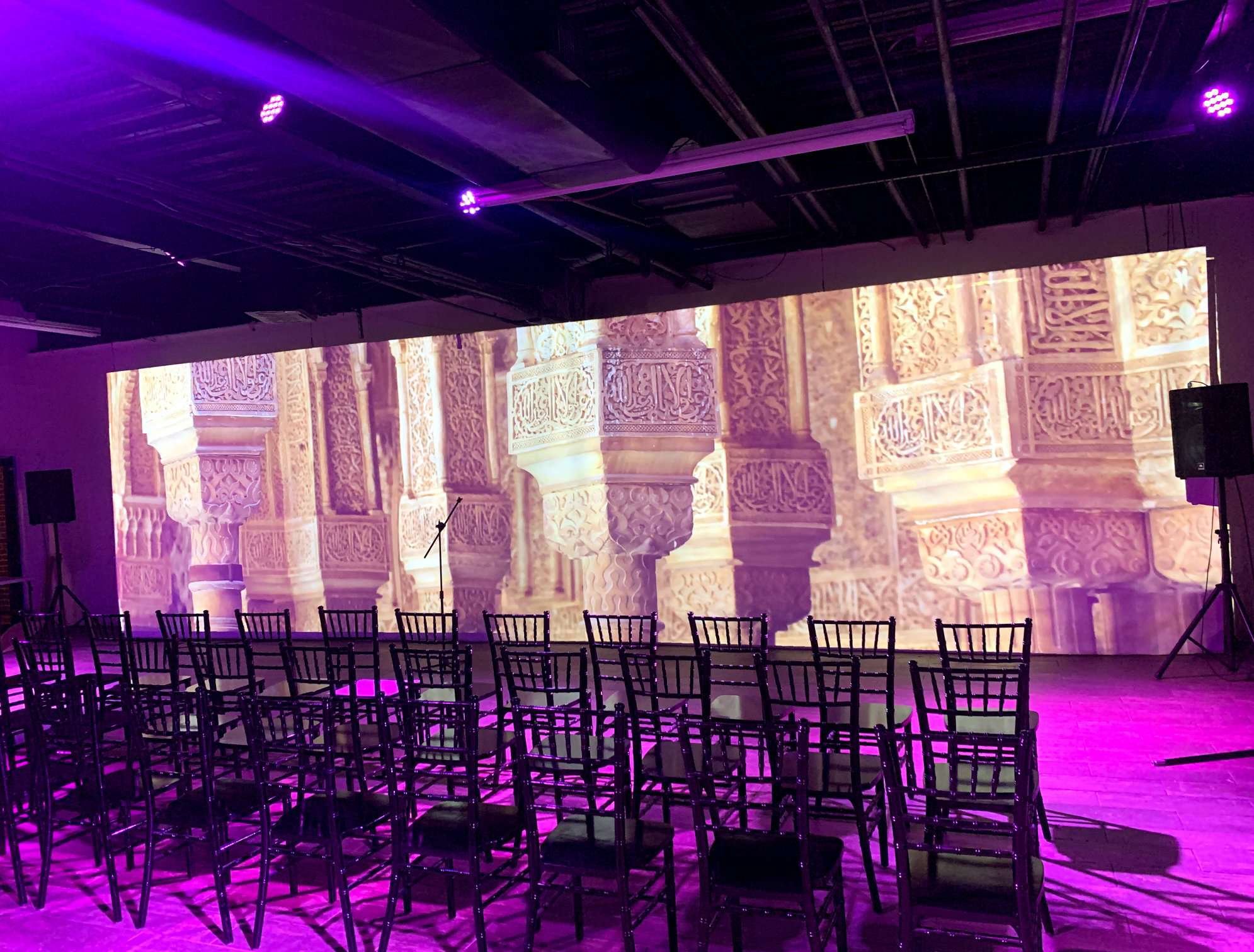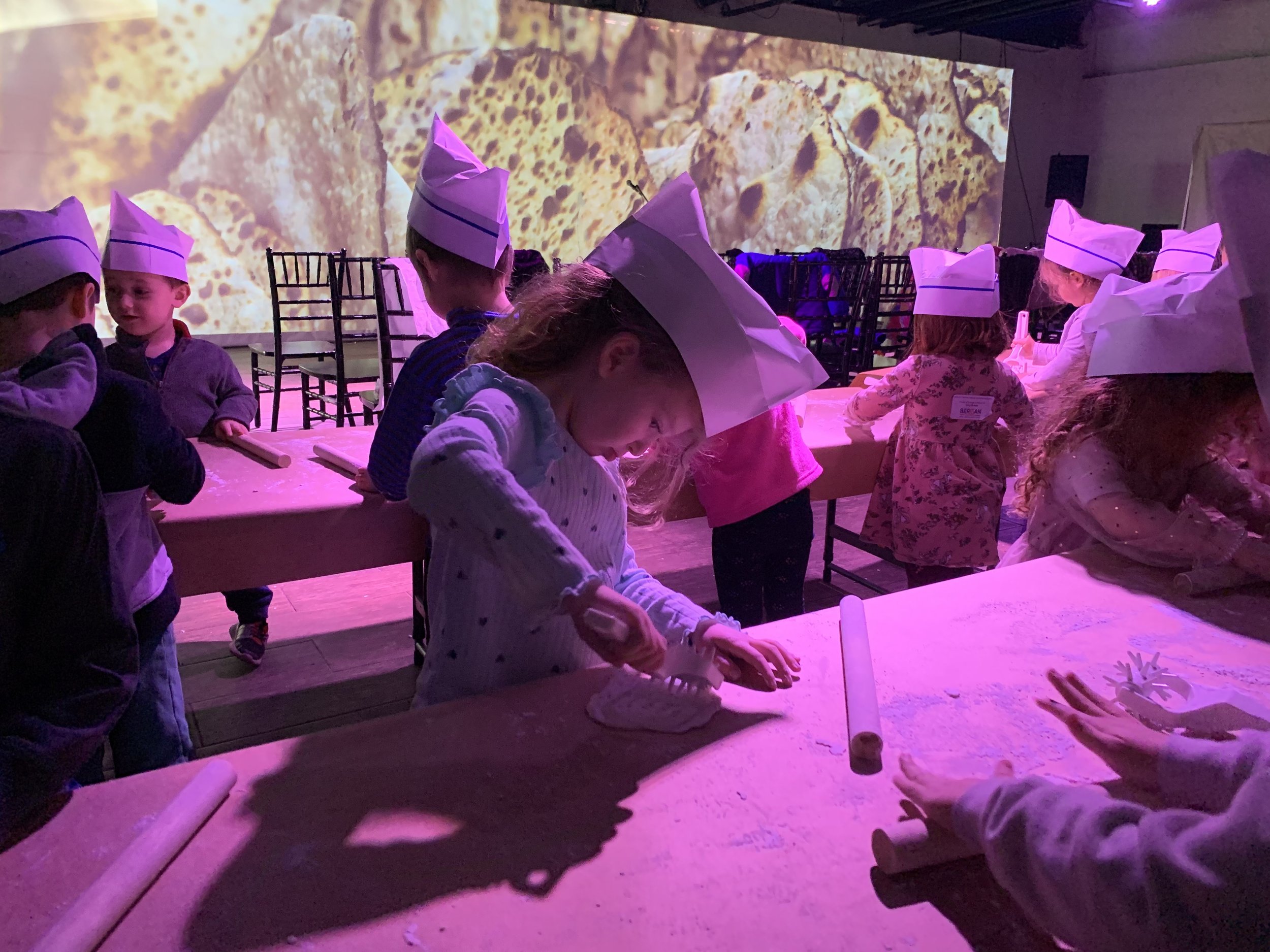
Embracing Differences
The “Embracing Differences” series, modeled after the Jewish Children’s Museum successful “Public School Cultural Connections” initiative, is designed to introduce elementary and middle school children to key aspects of Jewish life, fostering tolerance and increasing cultural awareness.
By exploring the positive elements of cultural diversity, students will discover the rewards that come from overcoming prejudice and acquire the early skills for learning from those who have different beliefs and ways of doing things.
As we launch the “Embracing Differences” initiative, JCrafts is offering the first workshop at no cost to all Public Schools in Montgomery County.
Reservations are subject to availability and accepted on a first-come, first-served basis.
Scroll down for pictures and testimonials!
Bean-to-Bar + Chocolate Art
CULTURE
The Chocolate Series is an educational and gastronomical adventure that will expose your students to the world of culinary history in a way they can taste, touch, and smell.
Participants will examine the role that food plays in different cultures and communities, as they learn how to make chocolate from scratch and craft edible art. They will encounter a variety of aspects of Jewish life: Traditional holiday treats, and cuisines that have been influenced and shaped by the places all across the globe where Jewish people once lived. The workshop also delves into the rich history of chocolate and its significance in Jewish culture. Students will discover fascinating stories about the relationship between Jews and chocolate.
Click "Read More" to access the hands-on details, a comprehensive outline, and relevant information.
This workshop is available throughout the year
Read More
HANDS-ON:
Discover where chocolate comes from, make chocolate from bean to bar, and create awesome creations from chocolate.
Hands-on activities include:
- Roasting
- Deshelling
- Grinding the cacao beans
- Learning the tempering process
- Making chocolate creations
WORKSHOP DETAILED OUTLINE
BIG IDEA:
The foods we eat tell the story of who we are and what is important to us.
ESSENTIAL QUESTIONS:
Why do we eat the foods that we do?
What can you learn about people from the food they eat?
OVERVIEW
Food is culture. It is much more than simply what is on our plates and where we derive the energy to fuel our bodies. The daily act of eating is as much about family, community and human relationships. And because absolutely everyone has to eat, food is probably the most universally shared cultural experience that we have.
In this workshop, participants will reflect on their own food preferences and memories as they make chocolate from scratch. They will harvest the cocoa pods, roast the beans, grind them, winnow and complete an 8 step process to create delicious mouth-watering chocolate. Using cutting-edge technology, they will temper and mold their own chocolate creations while exploring the kosher diet and Jewish foods rich with symbolism and stories.
Jewish foods rich with symbolism and stories. Students will also uncover the traditions that Jewish people have maintained about which foods are eaten and which are not, as well as the manner in which food is prepared and the particular way in which it is eaten. This food culture has been passed from one generation to the next, stretching back thousands of years, and is commonly referred to as Kosher.
The workshop also delves into the rich history of chocolate and its significance in Jewish culture. Campers will discover fascinating stories about the relationship between Jews and chocolate, adding a deeper layer of meaning to their experience.
Students can begin growing into informed eaters at a young age. Informed eaters make better choices for their taste buds, health, community, and environment. The Bean to Bar workshop will have your students licking their fingers as they discover how food can connect us with the world around us.
**SAMPLE EDUCATIONAL OBJECTIVES
Customized according to age group
Particpants will:
APPRECIATE how Jewish foods reflect the cultures and regions of the world where Jews have lived.
IDENTIFY their own food cultures and memories.
UNDERSTAND what the term Kosher means and the meaning behind Jewish cultural foods.
RECOGNIZE a number of Kosher symbols on common food items.
DESCRIBE the various stages for making chocolate, beginning with raw cocoa beans.
DESIGN chocolate confections.
BE FAMILIAR WITH foods that are common to Jewish festivals and their significance, and the rich history of Jews and chocolate.
SHARE examples of foods or recipes that are significant to their families or contain a particular memory.
UNDERSTAND that blessings on food have two roles in Jewish life. 1. They help the person eating express gratitude for the food. 2. They provide an opportunity to focus on the broader purpose of eating and be intentional about what a person places in their mouth.
**GENERAL INFORMATION **
AUDIENCE: Elementary School - Middle School.
DURATION: One hour.
MAXIMUM NUMBER OF PARTICIPANTS: This Bean-to-Bar workshop is designed to accommodate up to forty students. This number may be exceeded based on the circumstances.
MAKE AND TAKE: Cacao beans and chocolate!
The Olive Press
TOLERANCE
The ancient Greeks, under the rule of Antiochus IV Epiphanes, tried to force others to speak their language, dress like them and live as they did. Most of the people assimilated into the Greek culture, but there was a small group of Jewish people called the Maccabees who challenged the mighty Greek army for the right to practice their own unique way of life.
This hands-on and immersive experience is designed to capture a child’s imagination as it depicts the struggle for tolerance in the face of oppression. As students press olives into oil, they discover why standing up for every person’s right to express their individuality is a truly pressing matter.
Click "Read More" to access the hands-on details, a comprehensive outline, and relevant information.
This workshop is available primarily in November and December, and throughout the year upon request.
Read More
HANDS-ON:
The Olive Press program is a fun, hands-on, and educational experience!
Activities include:
- Pitting the olives and helping in pressing them, using a century-old iron press.
- Once the precious liquid has been extracted, it is purified into oil via a hand-driven centrifuge.
- Participants learn how to fashion their own wick out of cotton and the oil is tested to see if it will light!
- The oil is then placed in the Menorah with its multiple different branches symbolizing the human diversity that exists among us.
WORKSHOP DETAILED OUTLINE
BIG IDEA:
There is a beauty and strength in our differences.
ESSENTIAL QUESTIONS:
• Where do I feel like I belong?
• What makes me feel different or like an outsider?
• What can I learn from others who are different?
OVERVIEW
Participants relive the Hanukkah story as they try to procure new oil to light the Menorah.
Students pit the olives and help in pressing them, using a century-old iron press. It is only by the pressure of squeezing the olives that the valuable liquid containing the oil can be extracted.
The presenter employs role-playing to explore situations when students might sense attitudes of intolerance and circumstances that make them feel squeezed or under pressure to conform. Students are prompted to suggest ways in which they can respond to these situations that bring out the best in them and others.
Once the precious liquid has been extracted, it is purified into oil via a hand- driven centrifuge.
Participants fashion their own wick out of cotton and the oil is tested to see if it will light. The oil is then placed in the Menorah with its multiple different branches symbolizing the human diversity that exists among us.
As the small wick bursts into flame, participants pause to reflect on how they can use difference as fuel for lighting up their own lives, as well as others’.
SAMPLE EDUCATIONAL OBJECTIVES
Customized according to age group
Particpants will:
UNDERSTAND that the Hanukkah story represents a victory for those who challenged a powerful ruler in order to stay true to who they were and protect their way of life.
RECOGNIZE what it means to be different or an outsider.
IDENTIFY areas in their own lives and environments where they have experienced the pressure to conform or even instances of outright prejudice.
BE FAMILIAR with the key stages of the olive oil making process and how pressure is used to bring out the best of what is contained in the olive.
PROPOSE actionable things they can do to be an upstander on behalf of themselves or others when responding to bias and the pressures of conformity.
SHARE ways Hanukkah is celebrated, such as lighting the Menorah, playing Dreidel, eating Latkes, receiving Gelt, and what these practices represent.
COMPARE Hanukkah celebrations with their own family’s celebrations during the winter holiday season.
GENERAL INFORMATION
AUDIENCE: Elementary School - Middle School.
DURATION: One hour.
MAXIMUM NUMBER OF PARTICIPANTS: This Olive Press is designed to accommodate up to forty students. This number may be exceeded based on the circumstances.
MAKE AND TAKE: Sample of freshly-made olive oil in mini test-tube.
Back to the Exodus!
FREEDOM
The most celebrated event in American Jewish life today is the Passover Seder, and the Freedom Workshop brings this practice to life like never before.
This multi-sensory experience highlights the foundational themes of slavery and freedom that are at the core of all modern democratic systems, in a way that is designed to engage the whole child.
Your students will learn what it means to be humble, how they can define freedom for themselves, and the importance of ensuring the dignity of every single human being.
Click "Read More" to access the hands-on details, a comprehensive outline, and relevant information.
Read More
HANDS-ON
"Back to the Exodus" is JCrafts' signature workshop. Participants roll up their sleeves and participate in the matzah-baking process.
Activities include:
- Learning the skill of winnowing
- Separating the chaff from the grain
- Collecting the grain, and threshing it using an authentic old-fashioned hand mill.
- Participants then use the wheat to form a dough, which they roll, perforate and shape into their very own matzas!
WORKSHOP DETAILED OUTLINE
BIG IDEA:
Freedom is the ability for every person to realize their unique potential.
ESSENTIAL QUESTIONS
- Is slavery external or internal?
What truly makes someone free or enslaved?
How do I define freedom for myself?
OVERVIEW
Participants step into a time machine and travel back to the sand dunes of Egypt. They encounter the Hebrews as slaves to Pharaoh, experience the ten plagues, and join together with Moses as he stands up to the first recorded dictator and demands, “Let my people go!”.
Some historians believe that the Egyptians were the first to make leavened bread, having discovered a way to make it puff or rise. Participants learn that the only provision the Hebrews took with them when leaving Egypt was unbaked bread, still in dough form. When the hour of their liberation finally came, they left in a hurry and had no time to let the dough ferment. This unleavened bread, or ‘Matzah,’ baked as the hot desert sun scorched their backs, and was their source of survival for the next thirty days.
Participants roll up their sleeves and employ the same techniques for making unleavened bread that have been practiced for thousands of years. They explore the significance of bread and how this staple is viewed and valued in different cultures, while they uncover the central role that unleavened bread plays in the Hebrews’ liberation from Egypt. This leads to an appreciation for the unique place that the Passover meal holds in Jewish tradition today and provides a springboard for group discussion as well as a personal reflection on what being free truly means.
SAMPLE EDUCATIONAL OBJECTIVES
Customized according to age group.
Participants will:
BE FAMILIAR with the main characters and storyline of the Exodus narrative.
DIFFERENTIATE between external forces that inhibit our freedoms and our own internal feelings and attitudes that can be a source of self-imposed limitations.
DESCRIBE what society looks like when every single person is equally valued.
KNOW how Matzah looks and tastes and how handmade Matzahs are made.
APPRECIATE what Matzah symbolizes and why it is such an important part of Jewish tradition.
DEFINE what freedom means to them.
GENERAL INFORMATION
AUDIENCE: Elementary School and Middle School.
DURATION: One hour.
MAXIMUM NUMBER OF PARTICIPANTS: The "Back to the Exodus" workshop is designed to accommodate up to forty students. This number may be exceeded based on the circumstances.
MAKE AND TAKE: Matzah!
This workshop is available primarily in March and throughout the year upon request
The Shofar Factory
COMMUNICATION
Through unique media and innovative presentation, students encounter the signature observance of the Jewish New Year, the blowing of the Shofar - the traditional ram’s horn. Students will learn that individual horn sounds have different meanings. The sound of the Shofar serves as a wake-up call and a source of communication.
Students are encouraged to experiment with different kinds of trumpets and horns and interpret the messages that the horn sounds share. Additionally, they actively engage in the process of crafting the horn, participating in tasks such as sawing, drilling, and finishing, which enhances their hands-on experience and connection with this traditional instrument.
The intriguing ram’s horn is an instrument for both giving and receiving. When making a sound from the ram’s horn, one blows out of the narrow side. To use the horn to listen, again, the smaller part is placed by the ear. The ram’s horn contains the secret of true communication and the Shofar Factory leads participants in discovering its message.
Click "Read More" to access the hands-on details, a comprehensive outline, and relevant information.
Read More
HANDS-ON:
The traditional shofar comes to life in a breathtaking display of horns of all kinds and sizes.
- The audience is encouraged to touch and examine the different kinds of horns as they prepare to create their very own shofar.
Following the presentation, the audience partakes in:
- Sawing
- Drilling
- Finishing
- Shellacking
WORKSHOP DETAILED OUTLINE BIG IDEA:
The need to be understood and listened to is a basic human need
ESSENTIAL QUESTIONS:
• How is hearing different from listening?
• How do cultural differences complicate communication?
OVERVIEW
The ‘Shofar’ is an enduring symbol of Jewish culture. During the first few centuries of the Common Era, the horn was displayed on ancient Israeli and Roman coins, amulets, and rings, and today the horn symbol can be found on modern Israel’s currency - the Shekel. Other cultures, too, such as the Syrian and Egyptian cultures place great emphasis on the horn as it was often a symbol on their money as well. These ancient societies understood the key message of The Ram’s Horn workshop: solid communication skills are an important part of building healthy relationships.
During the lesson, students are encouraged to touch and examine different kinds of horns; from beginner trumpets to military bugles, to ram and kudu horns. Students participate in the various stages of making a Shofar -curing, drilling, sanding, and shellacking. Participants discover that active listening is an important part of communicating. Being mindful and paying attention allows us to learn and grow. Knowing how to listen can be the first step towards being a better friend and a better student.
It is also the key to fixing relationships, showing forgiveness, and understanding opinions and points of view that are different from our own.
SAMPLE EDUCATIONAL OBJECTIVES
Customized according to age group
BE FAMILIAR with the different customs associated with the Jewish New Year: blowing the shofar, eating apples dipped in honey and round Challah, as well as asking forgiveness of others.
RECOGNIZE the different sounds of the Shofar SHARE the various steps required to create a Shofar from a raw ram’s horn.
CREATE Shofar sounds that reflect their own understandings of the themes and messages of the High Holidays.
PRACTICE active listening and role-play ways to take responsibility for understanding as well as being understood.
APPRECIATE the role that listening can play in maintaining and improving our friendships.
GENERAL INFORMATION:
AUDIENCE: Elementary School - Middle School.
DURATION: One hour.
MAXIMUM NUMBER OF PARTICIPANTS: This Shofar Factory is designed to accommodate up to forty students. This number may be exceeded based on the circumstances.
MAKE AND TAKE: Rams’ horn keychain or rams’ horn Shofar.
This workshop is available primarily in September and throughout the year upon request
The Art of Writing
EXPRESSION
Thousands of years before it found its way to a printing press, the handwritten Torah scroll was at the heart of Judaism. It can still be found, in its same form, as the focal point of any Jewish center around the globe. Participants will immerse themselves in the history of written expression and experience the magic of taking something seemingly unusable and transforming it into an enduring object of teaching and inspiration.
The hands-on workshop offers an immersive experience for participants, allowing them to explore the intricate process of transforming hides into parchment. They will examine up close multiple hides suitable for use and learn the step-by-step method of turning hide into parchment. Students will also have the opportunity to create ink from scratch using a mortar and pestle, delving into the traditional methods of ink-making. Moreover, they will receive a crash course in authentic quill writing on parchment, connecting with the ancient art of calligraphy and gaining a deeper appreciation for the meticulous craftsmanship behind the creation of ancient texts.
Click "Read More" to access the hands-on details, a comprehensive outline, and relevant information.
Read More
The Art of Writing demonstrates how the written word can go hand-in-hand with the recycling process. In a fast-paced, digital age where the handwritten note- turned keepsake has become increasingly rare, this workshop seeks to transform our throw-away attitudes into ones that value reuse, and appreciate authentic communication and the power of the written word.
HANDS-ON:
• Examining up close multiple hides fit for use hides
• The process of turning hide into parchment
• Covering many fun facts about the Torah
• Making ink from scratch using a mortar and pestle
• A crash course in writing with an authentic quill on parchment
WORKSHOP DETAILED OUTLINE
BIG IDEA:
The written word is one of humanity’s most transformative creations.
ESSENTIAL QUESTIONS:
• How are the spoken word and the written word different?
• What does the written word make possible that spoken words can not?
• How has digitization impacted the power of our written words? How can words be written in ways that are environmentally friendly?
OVERVIEW
This presentation takes your students on a journey through history as they investigate the origins of the written word and how our ability to use symbols to communicate our thoughts has developed over time - from rocks to reeds and from parchment to paper. Participants will develop an early appreciation for the printing press and digitization, achievements that have transformed our ability to learn from one another in ways that our ancestors could never have imagined.
This captivating workshop will also help your students discover how writing can be done in a way that respects the environment. Recycling was exercised in many ancient civilizations and Jewish culture has long celebrated the concept of restoring and reusing. The Torah scroll is written on a material that might otherwise be discarded. By sanding down animal hides that are stretched out on a scribe’s stretching frame, children discover the process of turning a rough hide into soft, velvety parchment.
Participants will make ink from scratch, using an ancient scribe’s recipe and organic ingredients ground in a mortar and pestle. They will fashion their own quill, and use the ink and quill to write heartfelt notes on parchment. As your students learn to appreciate the significance of the Torah scroll in Jewish culture, they will also come to view the written word in an entirely new light.
SAMPLE EDUCATIONAL OBJECTIVES
Customized according to age group
KNOW what a Torah scroll is and why it is preserved as an important historical object in Jewish life.
UNDERSTAND that writing means creating a physical symbol for spoken words.
DISTINGUISH between the written word and other forms of storytelling that use images and symbols.
APPRECIATE how the invention of the printing press transformed culture by greatly increasing the amount of information people had access to, and how digitization has revolutionized this further.
COMPARE the environmental benefits of different forms of the written word.
DESCRIBE the materials used to write a Torah scroll and the method by which it is written.
HYPOTHESIZE as to why Torah scrolls are still written in the same way, with the identical text inside.
DESIGN enduring written messages that express personal thoughts and feelings, using sustainable materials.
GENERAL INFORMATION
AUDIENCE: Elementary School and Middle School.
DURATION: One hour.
MAXIMUM NUMBER OF PARTICIPANTS: The Art of Writing workshop is designed to accommodate up to forty students. This number may be exceeded based on the circumstances.
MAKE AND TAKE: Authentic parchment, inscribed by each student with their chosen message and mounted on a wooden plaque.
This workshop is available throughout the year.
Our Environment
EARTH’S CARETAKERS
The Environment workshop opens children’s eyes to the wonders of the world around them, and the responsibility we have to protect our natural resources from harm. Participants discover how their everyday habits and actions can make a difference, and learn to see themselves as caretakers of the planet that G-d has created.
The Detailed Outline of this workshop will soon be available on this page!
Other available workshops:
MONTGOMERY COUNTY COUNCIL
ROCKVILLE, MARYLAND
OFFICE OF COUNCILMEMBER SIDNEY KATZ
October 23, 2023
To Whom It May Concern:
I am writing to support the Embracing Differences program initiated by JCrafts. This program, based in Rockville, is a commendable nonprofit educational organization that provides valuable cultural workshop experiences to lower and middle school students.
JCrafts has been making an impact by reaching approximately 10,000 children through their flagship programming. The introduction of the Embracing Differences initiative, inspired by the successful Jewish Children's Museum School Initiative, is a testament to their commitment to fostering tolerance and increasing cultural awareness. This initiative is particularly crucial in our diverse community, and it provides a unique platform for our schools to embrace and celebrate our differences.
The Embracing Differences program offers public schools a complimentary program that allows students to explore various aspects of Jewish artisanship, including traditions of scribal craftsmanship, chocolate making from scratch, the olive oil-making process, and captivating science-based workshops. Importantly, these workshops are inclusive, welcoming students from diverse backgrounds, regardless of race or faith.
In light of recent incidents of intolerance and anti-Semitic disturbances at public schools and the dramatic uptick of Anti-Semitism in general, the Embracing Differences initiative takes a proactive approach to address these issues. Its mission is to equip students with the knowledge and skills to promote tolerance and view themselves as ambassadors in their communities, promoting diversity as a positive force and embracing differences as a catalyst for positive change.
I believe that the Embracing Differences program aligns with our shared values of diversity, tolerance, and support this program in our schools.
Sincerely,
Sidney Katz
Councilmember for District 3
MONTGOMERY COUNTY COUNCIL,
ROCKVILLE, MARYLAND
ANDREW FRIEDSON
COUNCILMEMBER
DISTRICT 1
JCrafts Center for Jewish Life and Tradition
14803 Southlawn Dr.
Rockville, MD 20850
March 11, 2024
To whom it may concern,
I am writing to express my appreciation and support for the "Embracing Differences" initiative offered by JCrafts, a nonprofit educational organization based in Rockville. This remarkable program is dedicated to fostering tolerance, increasing cultural awareness, and empowering students from all backgrounds to embrace diversity as a positive force.
JCrafts has been a beacon of educational enrichment, offering hands-on, immersive, and culturally engaging workshops to lower and middle school students. Their flagship programming has already positively impacted approximately 10,000 children.
The "Embracing Differences" initiative, inspired by the successful Jewish Children's Museum School Initiative, is a testament to JCrafts' commitment to addressing the critical issues of our time. It provides an invaluable opportunity for students to explore the rich traditions of various crafts and cultural practices, fostering a deep appreciation for diversity and cultural respect.
In this moment, the need for programs like "Embracing Differences" is more significant than ever. It proactively equips students with the knowledge and skills to not only tolerate diversity but also to become ambassadors for positive change in their communities. This initiative takes a stand against intolerance and empowers young minds to harness the power of their differences for the greater good.
After visiting, I was deeply impressed by the state-of-the-art studio Jcrafts, unique and immersive learning experience, and commitment to inclusivity. In such challenging and divisive times, we need more proactive, educational approaches to addressing ignorance and intolerance.
I encourage schools in our community to take advantage of this opportunity and participate in the "Embracing Differences" program which will contribute to a more inclusive and diverse educational landscape in our county.
I would like to extend my appreciation to JCrafts for their unwavering dedication to the betterment of our community. I am confident that this initiative will have a lasting and positive impact on our students, fostering a sense of unity and understanding among them.
I look forward to attending upcoming events related to the "Embracing Differences" program and to supporting its continued success.
Sincerely,
Andrew Friedson
Councilmember, District 1
